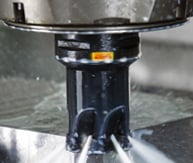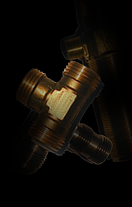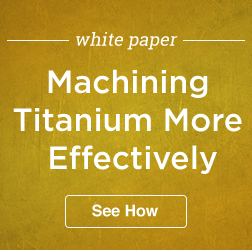Machining titanium and other exotic materials presents a number of challenges, and although there are many conventional techniques that help in this process, this video presents a unique, unconventional approach: Cryogenics.
Machining titanium and other exotic materials presents a number of challenges, and although there are many conventional techniques that help in this process, this video presents a unique, unconventional approach: Cryogenics.
Automakers round the world are faced with a serious dilemma: How do you meet various government emission and fuel economy standards while still producing strong, safe vehicles? Reducing weight is a key strategy, of course, and that means moving away from steel to lighter materials. It’s estimated that steel currently accounts for about 60% of an average automobile’s weight. However steel content decreases as automakers incorporate aluminum, plastics, manganese, composites and advanced high-strength, but lighter weight, steel alloys. The most recent example is the venerable Ford F-150 pickup that now uses aluminum for 25% of its curb weight.
 Shortening machining cycle time, reducing labor costs and extending tool life can all play a major role in improving productivity and, thereby, your bottom line. While using the most advanced machine tools is certainly a key component in achieving greater productivity, it’s not the entire answer. It’s equally important to optimize all aspects of a manufacturing operation from raw materials through delivery to the customer.
Shortening machining cycle time, reducing labor costs and extending tool life can all play a major role in improving productivity and, thereby, your bottom line. While using the most advanced machine tools is certainly a key component in achieving greater productivity, it’s not the entire answer. It’s equally important to optimize all aspects of a manufacturing operation from raw materials through delivery to the customer.
 Thanks to tougher state and pending federal regulations, if you machine brass parts that will be used to deliver potable water you are either preparing to or already in the process of machining these parts from no-lead brass. Moreover, it’s expected that in the near future lead will no longer be used in any ferrous or non-ferrous alloys. So CNC machine shops that traditionally work with leaded brass face new challenges as they switch to unleaded material.
Thanks to tougher state and pending federal regulations, if you machine brass parts that will be used to deliver potable water you are either preparing to or already in the process of machining these parts from no-lead brass. Moreover, it’s expected that in the near future lead will no longer be used in any ferrous or non-ferrous alloys. So CNC machine shops that traditionally work with leaded brass face new challenges as they switch to unleaded material.

The popularity of titanium alloys as a material for structural and other parts has grown exponentially in the past few years. Unfortunately, many manufacturers find that working with titanium is challenging due to the physical characteristics of the metal and its chemical composition. For example, titanium is a poor conductor of heat and more heat is generated when machining titanium than many other metals.
 Every new part brings its own set of challenges to the machinist. Not the least of these is the metal to be cut, milled or drilled. Extremely hard metals like H-13, S-7, M-2, or CPM, and exotic metals like Titanium, Inconel® or Incoloy® can be particularly difficult.
Every new part brings its own set of challenges to the machinist. Not the least of these is the metal to be cut, milled or drilled. Extremely hard metals like H-13, S-7, M-2, or CPM, and exotic metals like Titanium, Inconel® or Incoloy® can be particularly difficult.
The chief problem manufacturers run into when dealing with these kinds of materials, is failing to look at the whole picture. Our tendency is to “make do” with what we have and rely on a new fixture or different cutting tool to solve the problem. As a result we may be able to produce the part, but not as efficiently as we would like. And as we all know, efficient operation means greater productivity, less scrap and rework and a stronger bottom line.